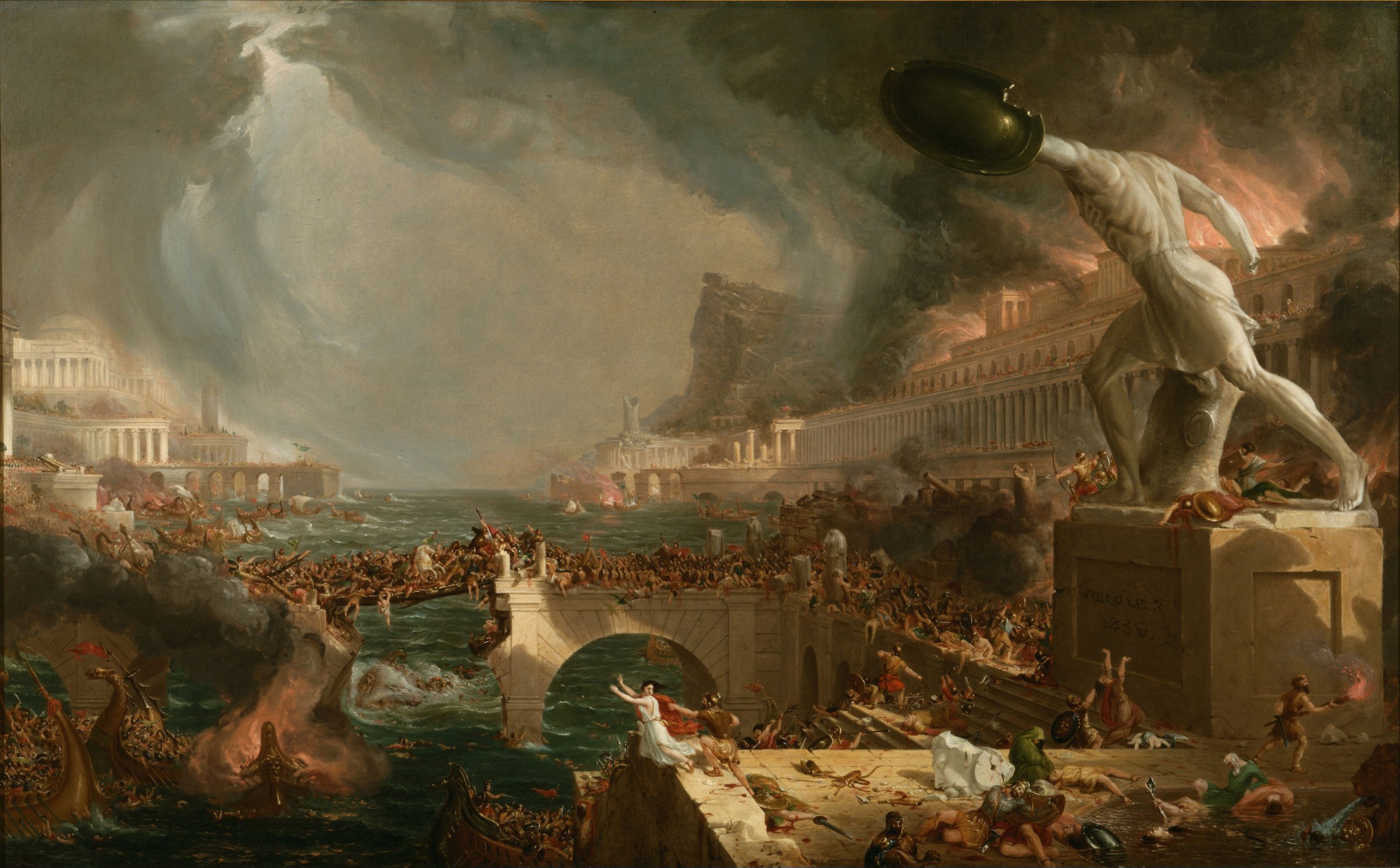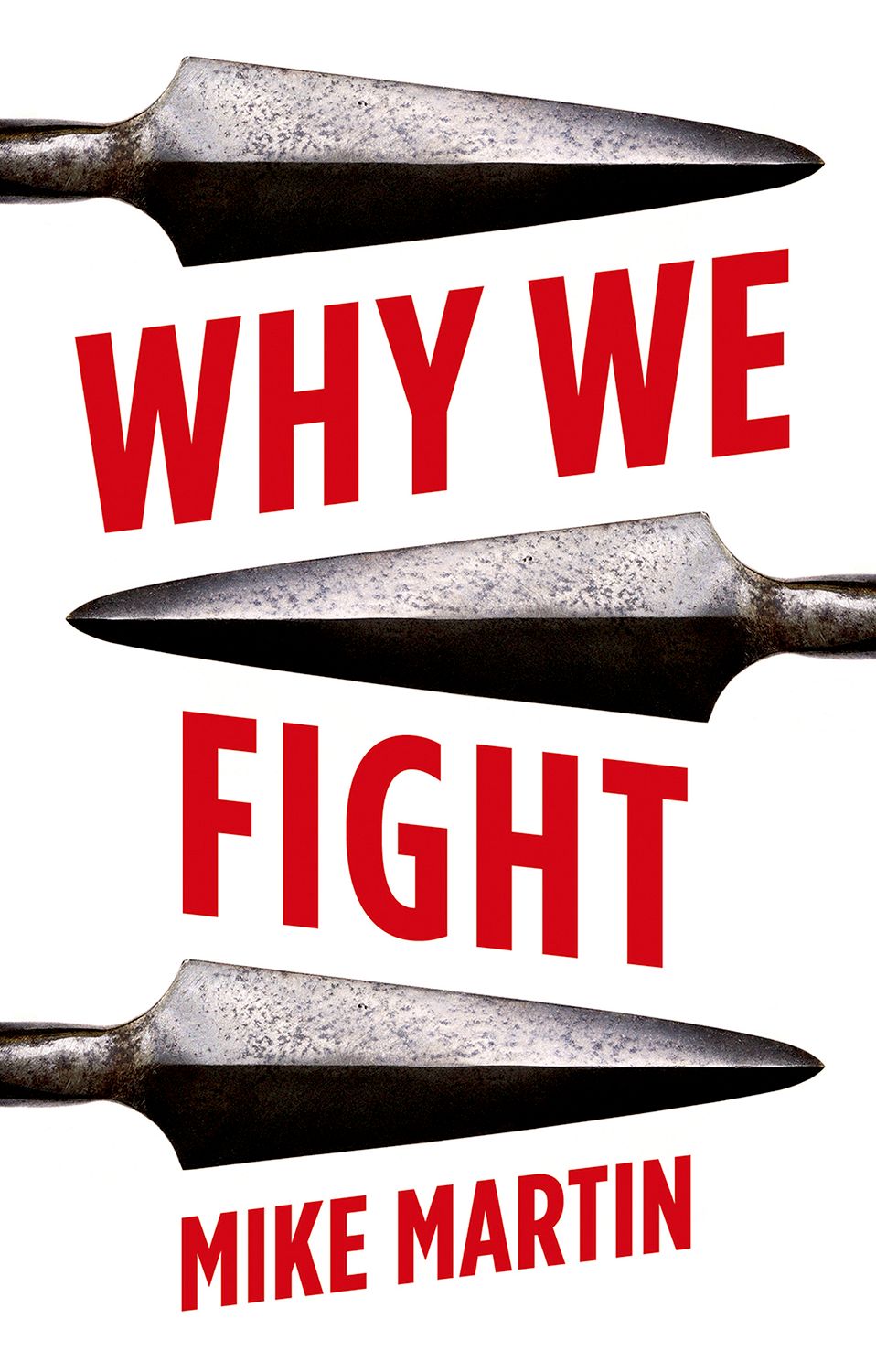
In recent years, a person could be forgiven for feeling as if conflict is inescapable. Political polarization has increased. Levels of societal violence and terrorism are surging. Endless wars continue, with no conclusion in sight.
Why is there so much chaos? The history of violence offers one possible answer.
Scholars—from psychologists to political scientists specializing in conflict—are starting to understand that the desire to belong among humans plays an outsized role in generating group violence of all kinds. This evolutionary desire to belong does not mean belonging to just any group of humans, but to a cohesive social group that protects you from violence, and gives you access to resources and sexual partners. And for a social group to remain cohesive it needs to have norms and rules that solve five basic coordination problems inherent to groups. These five problems are: hierarchy (who makes the decisions), identity (who is in the group and who is out), trade (how do we trade or share resources), disease (how do we manage disease with so many individuals living in close proximity) and punishment (who are we allowed to punish as a group, and for what). If a group fails to solve these five problems, violence ensues and the group splinters and cleaves into smaller groups
As average human group sizes have grown over macro history—from family, to tribe, to the mega societies in which we now live—we’ve solved these problems at progressively larger scales. And as groups are by definition mostly non-violent internally, it is easy to see why bigger groups lead to lower levels of violence for most people.
Drawn on a graph, these processes look like the teeth of a saw. Just as a saw looks as if it were a straight edge when viewed at a distance, over the long sweep of human history, the trend is clear: violence and group size inversely correlate.
But measured over decades, or even hundreds of years, the jagged edge appears: bigger groups do crumble into smaller groups and levels of violence spike, and vice versa. This is what happened when the Roman Empire collapsed. The lessons from history are clear: bigger, well-organized, cohesive groups bring lower levels of violence for the average person—but those groups don’t eliminate violence entirely.
So, how does this happen? One factor, history shows, is communication.
Communications—everything from roads, to rivers, to writing and the Internet—enable groups of humans to share a consensus around the solutions to the five group problems. In short, communications allow a group to coordinate, and new communications technologies allow bigger groups to coordinate. The flip side of this is that communications technologies are disruptive. In laying the foundations for a larger scale of group coordination, they disrupt the balance of consensus. New methods of communication allow new voices—whether internal or external to the group, or both—to enter the group’s consciousness. New people—new to the group—do things differently. Suddenly, the consensus on how to solve the five problems breaks down, and the group begins to lose cohesion.
While this has happened multiple times during human history, there have been only three seismic communications revolutions.
Get your history fix in one place: sign up for the weekly TIME History newsletter
The first was the development of writing, in approximately 3000 BCE. Initially used for accounting and taxation, writing enabled the ancient empires to grow out of chiefdoms and to bring together multi-ethnic societies. Among other things, it completely changed how we used agricultural resources (the “trade” problem of group coordination) and made hierarchies—who could write—that much more powerful. These ancient empires laid the foundations, nearly 2,000 years later, for the so-called Axial Age, in which Buddhism, Platonism, Zoroastrianism, Jainism, Confucianism and other universalist ideologies began to flourish, spreading ideas that fit the significantly bigger consciousness of the multi-ethnic empires.
The second major communications revolution was the invention of the Gutenberg printing press in about 1400 CE. This development, and the mass communication it allowed, hugely disrupted the European spiritual authority of the time—the Catholic Church—by enabling the spread of Protestant ideas (the “hierarchy” problem of group coordination). The invention of the nation-state further reduced the level of violence experienced by the average person, but only after a spike in it: The Wars of Religion ravaged Europe before the Treaty of Westphalia in 1648 established the primacy of state sovereignty.
We are currently living through the third communications revolution: the Internet. Invented late last century, its use has grown exponentially: by the end of 2018, more than half of the world’s population was online. It is currently disrupting our senses of nationhood, hierarchy, equality, resource sharing and employment, among other things. It is upending national consensuses on all of the five group problems at once.
The Internet is also laying the foundations for what could be a truly global society. Most of the largest problems that we face—climate change, corporate and personal taxation, data privacy, terrorism, oceanic pollution and inequality—sit between the level of the nation-state (the last successful level of human organization) and the global level. All of them are variants on the same five basic problems we have faced throughout our history. Solve these problems and we have taken a step closer to the global set of ideas—a global ideology—that would underpin a global society.
But what if we are on the other side of the sawtooth? What if we are unable to come together to formulate the new rules that we need to coordinate our quasi-global society? What if we are unable to recapture the societal cohesion that we previously felt? What if our disrupted sense of belonging drives us to war?
We cannot put the Internet back into a box and pretend that it does not exist. That we will end up living in a cohesive global society seems to be inevitable. Whether we will first suffer catastrophic violence, a possibility toward which history and evolution strongly hint, is still up for debate.

Mike Martin is a War Studies Research Fellow at King’s College London, having served previously in the British army in Afghanistan. His latest book, Why We Fight, exploring the evolutionary psychology of violence and how it has shaped the societies in which we live today, is available now from Oxford University Press.
More Must-Reads from TIME
- Cybersecurity Experts Are Sounding the Alarm on DOGE
- Meet the 2025 Women of the Year
- The Harsh Truth About Disability Inclusion
- Why Do More Young Adults Have Cancer?
- Colman Domingo Leads With Radical Love
- How to Get Better at Doing Things Alone
- Michelle Zauner Stares Down the Darkness
Contact us at letters@time.com